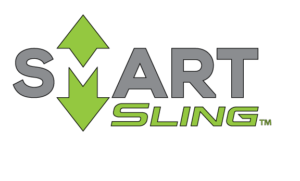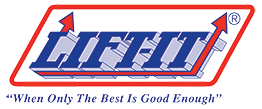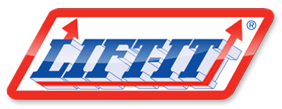You have no items in your shopping cart.
- Shop
- Quality
- Services
- Our Expertise
- Product Warning
- Videos
- Blog
- Contact Us
- 909-469-2251
-
Products
- Back
- Recovery Products
-
Sling Protection
- Back
- CornerMax® Sleeves
- CornerMax® Velcro Pads
- CornerMax® Pads
- Magnetic Corner Protectors
- Quick Sleeves - Felt
- Sewn Sleeves - Felt
- Quick Sleeve - Nylon
- Sewn Sleeve - Nylon
- Quick Sleeve - Web
- Sewn Sleeve - Web
- Sewn Chap Sleeves - Felt
- Quick Chap Sleeves - Cordura®
- Quick Tubular Sleeves - Felt
- Quick Tubular Sleeves - Nylon
- Quick Tubular Sleeves - Web
- Chafe Gear
- Shackle Pin Protector Pads
- Wire Rope Saddle Protectors
-
Lifting Slings
- Back
-
Web Slings
- Back
- Eye & Eye Slings
- Polyester Max Edge™ Eye & Eye Slings
- Endless Sling
- Polyester Max Edge™ Endless Slings
- Basket Hardware Slings
- Choker Hardware Slings
- Reversed Eye Slings
- Wide Body Cargo Slings
- Attached Eye Cargo Slings
- Single Leg - Eye & Eye Sling Bridles (SLB)
- Double Leg - Eye & Eye Sling Bridles (MLB2)
- Triple Leg - Eye & Eye Sling Bridles (MLB3)
- Quad Leg - Eye & Eye Sling Bridle Assembly (MLB4)
-
Round Slings
- Back
- Endless Round Slings
- Twin-Path Slings
- Rope Slings
- Special Purpose Slings
- Bridle Assemblies
- Cargo Slings
- Wire Rope Slings
- Chain Slings
- Utility Slings
- Wind Industry
- Container Lifting Assemblies
- Marine Slings
- Rail Industry Slings
- Mining Slings
-
Rigging Hardware
- Back
-
Shackles
- Back
- Van Beest® G-4161 Screw Pin Anchor Shackles
- Van Beest® G-4163 Bolt, Nut & Cotter Anchor Shackles
- Van Beest® P-6033 Wide Body Sling Shackles
- Van Beest® G-5263 Bolt, Nut & Cotter Alloy Anchor Super Strong Shackles
- Van Beest® G-4263 Screw Pin Wide Mouth Shackles with Bolt, Nut and Cotter
- Crosby® G-209 Screw Pin Anchor Shackle
- Van Beest® P-4161T Theatre Shackles
- Fittings & Connectors
-
Hoist Rings
- Back
- Actek® Swivel Hoist Ring
- Actek® Metric Swivel Hoist Ring
- Actek® Stainless Swivel Hoist Ring
- Actek® Metric Stainless Swivel Hoist Ring
- Actek® Ultra Lifting Ring
- Actek® Metric Ultra Lifting Ring
- Actek® Sideload Hoist Ring
- Actek® Metric Sideload Hoist Ring
- Actek® Forged Swivel Hoist Ring
- Actek® Metric Forged Swivel Hoist Ring
- Hooks
- Eye Bolts
- Turnbuckles
- Masterlinks
- Material Handling
-
Stahlwille
- Back
- Torque Wrenches
- Tool Bags & Buckets
- Tie Downs
-
Hoists
- Misc.
- Training Programs
- Plate Clamps
-
Blocks
- Back
- Rope Blocks
-
Rope-Cordage
- Nets
- Safety Resources
- Helicopter Rigging
- Featured Products
-
Products
- Back
- Recovery Products
-
Sling Protection
- Back
- CornerMax® Sleeves
- CornerMax® Velcro Pads
- CornerMax® Pads
- Magnetic Corner Protectors
- Quick Sleeves - Felt
- Sewn Sleeves - Felt
- Quick Sleeve - Nylon
- Sewn Sleeve - Nylon
- Quick Sleeve - Web
- Sewn Sleeve - Web
- Sewn Chap Sleeves - Felt
- Quick Chap Sleeves - Cordura®
- Quick Tubular Sleeves - Felt
- Quick Tubular Sleeves - Nylon
- Quick Tubular Sleeves - Web
- Chafe Gear
- Shackle Pin Protector Pads
- Wire Rope Saddle Protectors
-
Lifting Slings
- Back
-
Web Slings
- Back
- Eye & Eye Slings
- Polyester Max Edge™ Eye & Eye Slings
- Endless Sling
- Polyester Max Edge™ Endless Slings
- Basket Hardware Slings
- Choker Hardware Slings
- Reversed Eye Slings
- Wide Body Cargo Slings
- Attached Eye Cargo Slings
- Single Leg - Eye & Eye Sling Bridles (SLB)
- Double Leg - Eye & Eye Sling Bridles (MLB2)
- Triple Leg - Eye & Eye Sling Bridles (MLB3)
- Quad Leg - Eye & Eye Sling Bridle Assembly (MLB4)
-
Round Slings
- Back
- Endless Round Slings
- Twin-Path Slings
- Rope Slings
- Special Purpose Slings
- Bridle Assemblies
- Cargo Slings
- Wire Rope Slings
- Chain Slings
- Utility Slings
- Wind Industry
- Container Lifting Assemblies
- Marine Slings
- Rail Industry Slings
- Mining Slings
-
Rigging Hardware
- Back
-
Shackles
- Back
- Van Beest® G-4161 Screw Pin Anchor Shackles
- Van Beest® G-4163 Bolt, Nut & Cotter Anchor Shackles
- Van Beest® P-6033 Wide Body Sling Shackles
- Van Beest® G-5263 Bolt, Nut & Cotter Alloy Anchor Super Strong Shackles
- Van Beest® G-4263 Screw Pin Wide Mouth Shackles with Bolt, Nut and Cotter
- Crosby® G-209 Screw Pin Anchor Shackle
- Van Beest® P-4161T Theatre Shackles
- Fittings & Connectors
-
Hoist Rings
- Back
- Actek® Swivel Hoist Ring
- Actek® Metric Swivel Hoist Ring
- Actek® Stainless Swivel Hoist Ring
- Actek® Metric Stainless Swivel Hoist Ring
- Actek® Ultra Lifting Ring
- Actek® Metric Ultra Lifting Ring
- Actek® Sideload Hoist Ring
- Actek® Metric Sideload Hoist Ring
- Actek® Forged Swivel Hoist Ring
- Actek® Metric Forged Swivel Hoist Ring
- Hooks
- Eye Bolts
- Turnbuckles
- Masterlinks
- Material Handling
-
Stahlwille
- Back
- Torque Wrenches
- Tool Bags & Buckets
- Tie Downs
-
Hoists
- Misc.
- Training Programs
- Plate Clamps
-
Blocks
- Back
- Rope Blocks
-
Rope-Cordage
- Nets
- Safety Resources
- Helicopter Rigging
- Featured Products
- Shop
- Quality
- Services
- Our Expertise
- Product Warning
- Videos
- Blog
- Contact Us
- 909-469-2251
Smart Sling FAQs

Q. What happens if a sling is severely overloaded?
Answer: The Smart Sling™ system will immediately alert users of the situation. First through the base station, the laptop will display a red “Overload” alert on the screen. Since there is a direct connection between the sling and the base, this alert will be seen even if there is no internet connection available on site. In addition, if there is an internet connection, the alerts will also immediately be transmitted through text message and email to any registered users on the system. They will receive this alert no matter where they are located, as long as they have access to the device registered.
Once the sling has been overloaded, it will show the Overload status on the system even after the load has been removed. This ensures that a severely overloaded sling will not be used again in a questionable state. The sling must be returned to an authorized Slingmax® repair station. If the sling passes inspection and proof load, then the Smart Sling™ system will be reset and the sling can be put back into service.
Q. Will Smart Sling™ interfere with current wireless equipment on site?
Answer: All wireless equipment must be tested and certified to meet government regulations on interference. In the United States this is regulated by the Federal Communications Commission (FCC), and in Canada the agency is Innovation, Science, and Economic Development Canada (ISED). Smart Sling™ has been certified to comply with all regulations in both countries. As Smart Sling™ is expanded to other nations, all appropriate certifications will be obtained.
In addition, Slingmax® has taken some extra steps to decrease the chance for interference. One is Smart Sling™ operates on the 915 MHz band, rather than the more crowded 2.4 GHz that is used for most Wifi and equipment remote controls. The other is Smart Sling™ constantly hops between different frequencies in the assigned band. If there is interference on one frequency, it will only be on that for seconds before moving to the next.
FCC
Sling Overload Sensor
Base Station
ISED
Sling Overload Sensor
Base Station
Q. How long do the batteries last? How are they replaced?
Answer: The batteries will last approximately 2 years in normal use. The batteries are sealed within the Sling Overload Sensor which is inside the cover of the sling and are not accessible by the user. Slingmax® recommends replacement at an authorized repair station during the sling’s normal annual inspection.
Q. How durable is a Smart Sling™?
Answer: The Sling Overload Sensor and its components are built into the sling to make using a Smart Sling™ as easy to use as a normal Twin-Path® high performance roundsling. There are no external or exposed parts, and the electronics are secured within an IP67 rated weather and impact resistant enclosure to protect from the environment. Smart Slings™ are clearly marked with an orange “No Rig Zone” that protects the sensor from being crushed during use. There are no additional restrictions added by using a Smart Sling™. The electronics can survive Twin-Path® temperature limits and are also shock tested to 10g. Damage to a Twin-Path® sling that results in destruction of the Sling Overload Sensor may indicate hidden damage and elevated risk to the load bearing fibers as well.
Q. Can a Smart Sling™ get wet?
Answer: Yes! The enclosure of the Sling Overload Sensor is sealed and has been tested to a water depth of over 1 meter. When the sensor is underwater, it is unlikely to be able to maintain a connection to the base station, but once it is taken back out, it will reestablish communications. Smart Slings™ are designed for incidental contact with water such as using slings in the rain or being placed in a puddle. Contact Slingmax® before using Smart Sling™ in depths exceeding 1 meter (3 ft) for further information.
Q. When will Smart Sling™ react and send severe overload alerts?
Answer: Smart Sling™ is designed to react at 50% of the breaking strength of a Twin-Path® roundsling.
Q. What is the difference between Smart Sling Technology and your crane's Load Moment Indicator (LMI)?
Answer: Smart Sling™ builds on and improves on the existing overload detection system installed in Slingmax Twin-Path® slings, the Check-Fast® Inspection System, which has been in use since 2006 on over 500,000 Twin-Path® slings worldwide. Smart Sling Technology eliminates the guesswork by gauging the real tensile load on the core fibers of the roundsling itself. Smart Sling employs a mechanical system in the core fibers that instantly and irreversibly reacts to overload.
In the event of an overload, the Smart Sling mechanical system immediately engages, indicating that the load on the sling has exceeded over twice its rated capacity.
A Load Moment Indicator (LMI) is designed to monitor the entire load, which protects your crane. However, each individual sling is not monitored. Smart Sling monitors loads on each individual sling in your lift plan. Individual slings may be overloaded due to variables such as improper rigging, extreme sling angles, dynamic loading, and uneven load distribution. Any of these may cause one or more individual slings to be overloaded while the total load remains below the capacity of the crane.

